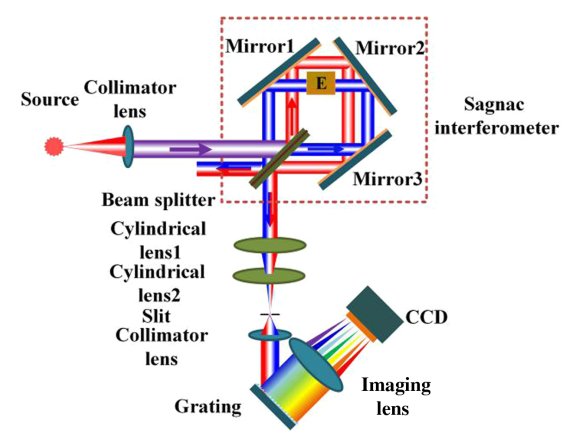The exploration of extrasolar planets has never been stopped and we always dream to discover an Earth-like planet in the vast universe. During the searching of extrasolar planets, a variety of instruments have been developed to accelerate the searching process, and one of the most effective method is proved to use the Radial Velocity (RV) implemented by common-path coherent-dispersion spectrometer (CODES).
A team led by Prof. WEI RuYi from the Xi'an Institute of Optics and Precision Mechanics(XIOPM) of the Chinese Academy of Sciences (CAS) proposed a novel method to design the efficient CODES. Their up-to-date result was published on the Journal Applied Optics.
Previous investigations have greatly optimized the traditional measurement of RV, which can be obtained by deriving the phase shift of the interference fingers created an interferometer with fixed optical path difference (OPD) between the two optical paths of interferometer. However, the explorations of Earth-like planets have been severely hindered by the precision of current RV measurements from the instrument noise and photon noise.
According to the researchers, “we have been inspired by the new type of the asymmetric CODES, which has advantages of high stability, high throughput, and wide spectral range.” However, the balance between OPD and visibility still need to be considered to obtain the satisfied RV precision.
On this base, they proposed a temperature-compensated optimal optical path difference (TOOPD) method in order to improve the performance of the instrument as much as possible.
By assuming the spectral line with a Gaussian-type power spectral density distribution, the relationship between the visibility and the OPD for the absorption/emission line in the new CODES system can be derived. Then the values of the optimal OPD under different wavelengths are deduced according to the efficiency function, which provides the basis for the CODES to choose the optimal OPD.
When the input conditions are fixed, the material combination that approximates the optimal OPD can be performed within the range of 0.66–0.9 μm. The simulation results indicate that the maximal difference between the optimal OPD and the OPD generated by the material combination is 0.733 mm and 1.122 mm, respectively, implying greater detection precision.
Meanwhile, the influence of temperature on the OPD can be reduced by 2–3 orders of magnitude by material combination, which greatly ameliorates the stability of the whole spectrometer.
The novel method provides a new idea for further improving the high-precision radial velocity detection of the asymmetric common-path CODES.
This work was supported by the National Natural Science Foundation of China, and the Shaanxi Science and Technology Project.

Schematic diagram of the asymmetric common-path CODES. (Image by XIOPM)
Download: